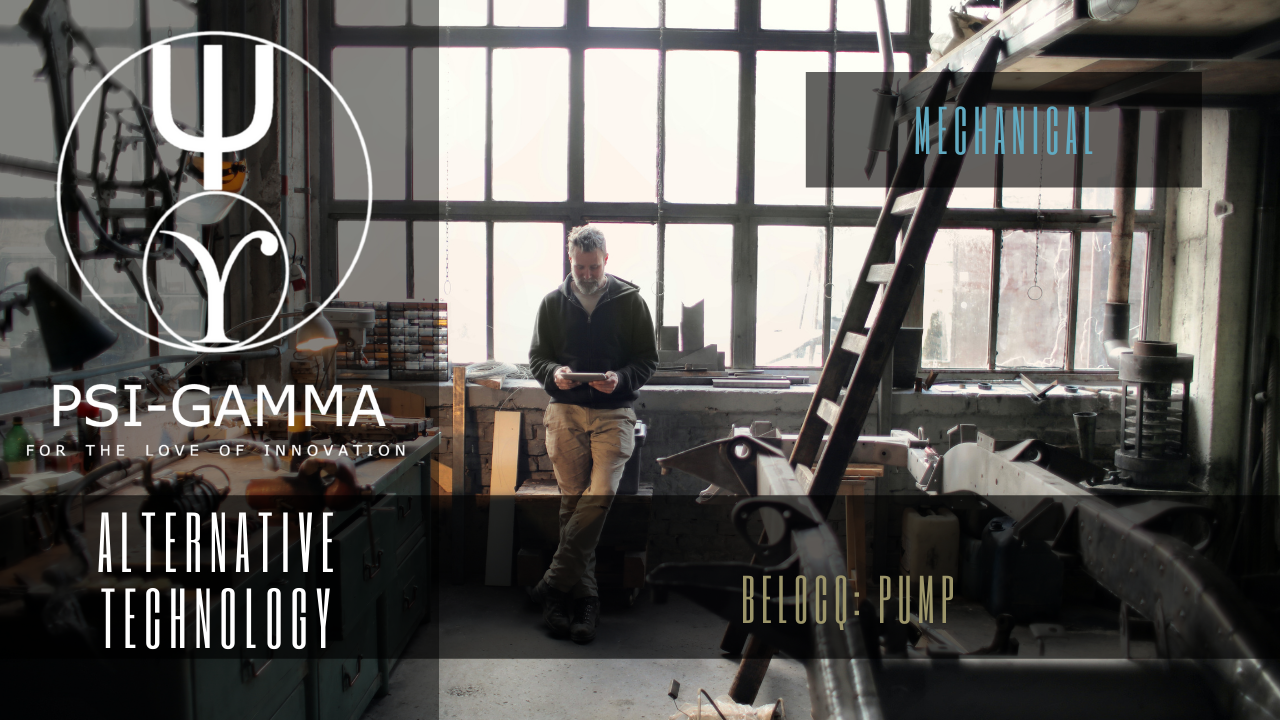
Belocq: Pump
The Bellocq Wave Pump was the first new mechanical principle to be discovered in the 20th century (Wilkes’ Rolamite was the second). It defies Toricelli’s Law by utilizing pressure waves rather than suction to pull water higher than 30 feet (the pump is located at the surface, not at the bottom of the well). The technology is very efficient and requires little power. In practice, it is possible to expel during each stroke of the piston a volume of liquid about 17 times as large as the volume displaced by the piston (about 5,000 liters/hour in the preferrred embodiment described in the patent).
Plus: US Patents for very similar acoustic wave pumps invented later by Arthur P. Bentley & Albert G. Bodine.
“New Pump Beats Natural Laws in Raising Water” Whassaaaap
Following the example of the United States Patent Office, 18 countries have issued patents to an Argentinian inventor upon an amazing pump that seems to violate natural laws. By creating waves in a pipeful of water, it makes the liquid run uphill.
When the inventor, Toribio Bellocq, applied for a US patent on a pump to be mounted on top of a well and to draw water up from almost unlimited depths, officials pointed out that his device apparently would have to defy the law of gravitation. Every high school student knows that by no effort can a pump suck water higher than approximately 33 feet. This is the limit at which the weight of an imprisoned column of water balances the atmospheric pressure outside. To force water higher from its source, authorities have always agreed that it must be pushed from below. Therefore Bellocq’s “wave pump” seemed in a class with perpetual motion machines, which are not patentable because they are impossible.
Bellocq built one of his pumps, installed it atop a Washington DC office building, and invited officials to inspect it. They saw it draw a steady stream of water up a pipe 80 feet high. Not until they dropped weights down the pipe and found no unseen machinery did they believe their own eyes. Then they acknowledged that Bellocq had chanced upon an entirely new mechanical principle and issued his patent.
So extraordinary is the operation of the new wave pump that even Bellocq admits that he is not certain of its principle , and leaves to scientists the verification of his own explanation.
In Bellocq’s pump a piston vibrates rapidly with an extremely short stroke. It deals hammerlike blows to a column of water in a pipe. His theory is that when the frequency of the blows is properly timed for the length of the pipe, a series of “stationary waves” is set up.
Suppose the pipe’s bottom to be closed, then layers are formed where the water is alternately rarefied and compressed without moving. Midway between these and at the bottom are regions where water rushes alternately up and down because of the waves.
When a one-way ball valve is added at the bottom, water enters from outside at one point in each wave cycle, to replace water moving upward from the bottom of the pipe. Once inside, it cannot back out. Every influx of water “inches” the whole column upward, without interfering with the waves that travel through it. A valve at the outlet, while not essential, improves the efficiency.










